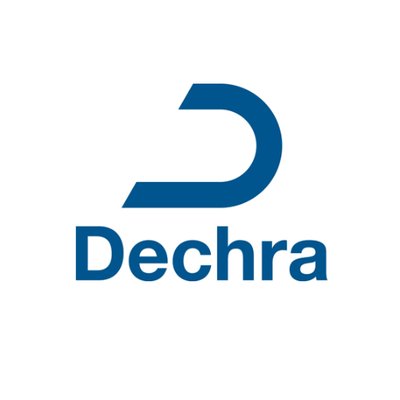Target species
Horses and ponies.
Indications for use
For the treatment of musculoskeletal disorders in horses and ponies where the anti-inflammatory and analgesic properties of phenylbutazone can offer relief against inflammation, pain and lameness (for example, osteoarthritic conditions, acute and chronic laminitis, bursitis and carpitis).
Contraindications
The therapeutic index of phenylbutazone is low. Do not exceed the stated dose or the duration of treatment.
Do not administer with other non-steroidal anti-inflammatory drugs concurrently or within 24 hours of each other.
Do not use in animals suffering from cardiac, hepatic or renal disease; where there is the possibility of gastrointestinal ulceration or bleeding; where there is evidence of a blood dyscrasia or of hypersensitivity to the product.
Special warnings for each target species
Discontinue treatment if no response is evident after four to five days treatment.
The clinical effect of phenylbutazone can be evident for at least three days following cessation of administration. This should be borne in mind when examining horses for soundness.
Special precautions for use in animals
Use in any animal under six weeks of age or in aged animals may involve additional risks. If such use cannot be avoided, animals may require a reduced dosage and special clinical management.
Avoid use in any dehydrated, hypovolaemic or hypotensive animal, as there is a risk of increased toxicity.
It is preferable that non-steroidal anti-inflammatory drugs, which inhibit prostaglandin synthesis, are not administered to animals undergoing general anaesthesia until fully recovered.
Response to long term therapy should be monitored at regular intervals by a veterinary practitioner.
Special precautions to be taken by the person administering the veterinary medicinal product to animals
The product should be handled with care at all times to reduce the risk of accidental ingestion, skin contact or self-injection. If accidental skin or eye contact occurs, the site should be washed immediately with water. If the product is self-injected or ingested, seek medical advice and show the product packaging.
Advice to doctors: gastric lavage (emesis in children) should be performed urgently. Charcoal haemoperfusion has also been shown to be beneficial. Treatment should then be administered symptomatically.
Other precautions
Some authorities (including the Jockey Club) regard phenylbutazone as a 'prohibited substance' under the rules of competition. Therefore, use of this product in a competition horse should be in accordance with the recommendations/advice of the relevant competition authorities.
Adverse reactions
Non-steroidal anti-inflammatory drugs can cause inhibition of phagocytosis and hence in the treatment of inflammatory conditions associated with bacterial infections, appropriate concurrent antimicrobial therapy should be instigated.
There is a risk of irritancy if the injection is accidentally inoculated under the skin during intravenous injection.
Rarely, collapse following intravenous injection has been reported. The product should be injected slowly over as long a period as is reasonably practical. At the first signs of intolerance, the administration of the injection should be interrupted.
Use during pregnancy and lactation
The safety of phenylbutazone in pregnancy has not been established. The compound has been shown to have no effect on initiation or regularity of the oestrus cycle in the mare. Phenylbutazone has been shown to cross the placenta. Use during pregnancy should be avoided whenever possible, particularly during the first trimester.
Interactions
Some non-steroidal anti-inflammatory agents may be highly bound to plasma proteins and compete with other highly bound drugs to produce an increase in non-bound pharmacologically active concentrations which can lead to toxic effects.
Gastrointestinal tract ulceration may be exacerbated by corticosteroids in animals given non-steroidal anti-inflammatory drugs.
Concurrent administration of potential nephrotoxic drugs (e.g. aminoglycoside antibiotics) should be avoided.
Our Standard Delivery - £6.75
Royal Mail Tracked 24 (Signed For)
- Next business day service
- Compensation cover up to £100
- Signature on delivery

Any orders placed after close of business on Thursday will not be delivered until Tuesday
Our Express Delivery - £10.45
Royal Mail Special Delivery Guaranteed by 1pm
- Next business day service
- Insured up to £500
- Signature on delivery

Please note that all chilled deliveries must be sent on an Express service.
Chilled orders placed after close of business on Wednesday will not be despatched until Monday
You must be logged in to write review
|
Category
|
POM-V
|
|
Temperature
|
Refrigerated
|
|
MA/VM/EU No:
|
10434/4007
|
|
Species
|
|
|
VMD Link
|
https://www.vmd.defra.gov.uk/productinformationdatabase/files/SPC_Documents/SPC_132904.PDF
|
|
NOAH Link
|
|
|
Dosage
|
Horses: 450 kg (1000 lb) body weight:
Maximum 10 ml (4.4 mg phenylbutazone/kg)
Ponies: 225 kg (500 lb) body weight:
Maximum 5 ml (4.4 mg phenylbutazone/kg)
To be administered by very slow intravenous injection in a single dose, which may be followed if necessary by oral phenylbutazone therapy commencing 24 hours after the injection.
In acute cases and in hospitalised animals the injection may be administered once daily for not more than five consecutive days.
Observe aseptic conditions.
Overdose
The therapeutic index of phenylbutazone is low. In man, charcoal haemoperfusion in conjunction with dopamine has been used successfully to treat overdosage with phenylbutazone, but there is no experience of the use of this technique in the horse.
|
|
Withdrawals
|
Not to be used in horses intended for human consumption. Treated horses may never be slaughtered for human consumption. The horse must have been declared as not intended for human consumption under national horse passport legislation.
|


